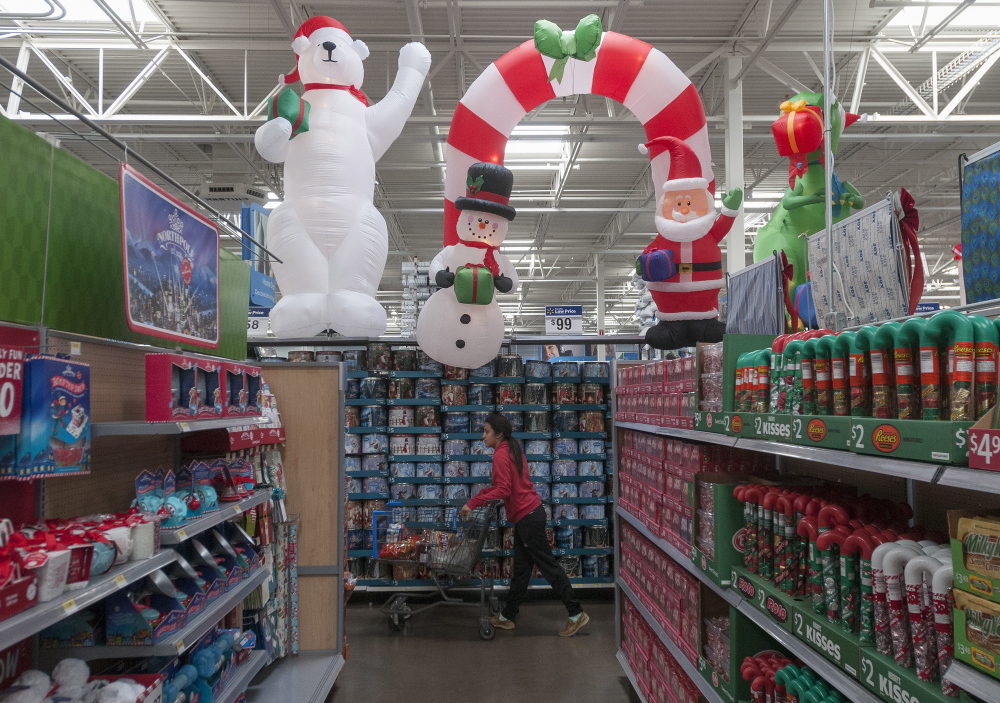It’s safe to say that we’ve never seen smarter shoppers or more prepared retailers two months before Christmas.
Everyone has their tools, and they know how to use them.
Companies are acknowledging last year’s problems: Wal-Mart said all its checkout lanes will be open during peak days and times. UPS has hired more drivers. Amazon.com has built more fulfillment centers. And data breach prevention antennae are up all over, not just at Target.
Shopping on Thanksgiving Day is no longer a shock and already a tradition in many families. And forecasters say it’s not likely that extreme storms will close stores and malls for multiple days across highly populated regions two years in a row.
So now the focus is on the consumer, and here’s what experts believe you are collectively prepared to do this holiday season.
Holiday spending will lead to a combined November and December retail sales increase of 2.5 percent to 4.5 percent over last year. The National Retail Federation is expecting a 4.1 percent increase.
There was a 3.1 percent increase a year ago, below the National Retail Federation’s 2013 forecast of 3.9 percent.
Many experts say consumers are sending mixed signals.
The relationship between spending and consumer confidence has not broken down, “but the correlation between the two has been lost,” said Lindsey Piegza, chief economist at Sterne Agee. “Consumers are constantly saying one thing and doing another.”
There’s one outlier among this year’s holiday forecasts: PwC forecasts that individual shoppers will spend an average of 7 percent less than last year.
For two consecutive years, most people in the PwC survey said the economy is the same or worse than it was last year, said Thom Blischok, chief retail strategist of Strategy&, a unit of PwC. This year it was 72 percent of respondents. And 84 percent said they plan to spend the same or less than last year.
“It’s the yin and yang of corporate profits and stock market gains. It’s a confusion of euphoria,” Blischok said. “That leaves the consumer saying: ‘I see what’s happening, but that’s not happening for me.’ ”
CHRISTMAS IN AUGUST
PwC forecasts that average household spending will be $684, down from $735 in 2013. Reasons include limited disposable income (64 percent), the rising cost of living (61 percent) and insufficient salary (37 percent).
“Unfortunately, the consumer clearly has been losing momentum,” Piegza said. “There are a few good things out there. Housing is in a positive direction, but rising home values have slowed. Energy prices are down, but that’s a temporary boost.”
Piegza is concerned that Christmas came early in many households. People spent more in August, and then lots of them bought the iPhone 6 in September, she said.
“I think those 10 million iPhone sales moved spending forward into September from Christmas,” Piegza said.
The Consumer Electronics Association forecasts a 2.5 percent holiday sales increase, up from a 0.9 percent increase last year, saying shoppers want what its members sell. Tablets, notebooks, TVs, smartphones and video game consoles round out the group’s top five.
Deloitte forecasts that overall holiday spending will be 4 percent to 4.5 percent above last year’s.
Holiday spending is predicted to increase 13 percent to $1,299 per household. That number sounds big, but it’s a broader measure that includes gifts, socializing away from home, entertaining at home, nongift clothing and home furnishings.
As far as shopping online vs. in stores, the most common reason shoppers gave for avoiding stores during the holiday season was long lines (40 percent). The most likely reason to buy in a store was a knowledgeable store employee (48 percent).
Half of store purchases are influenced by online research, Deloitte said, a huge incentive for stores to have top-notch mobile and desktop access.
SURVIVALISTS
Most surveys found that shoppers will focus on price.
Blischok of Strategy& says retailers have plenty of opportunity this holiday season. But, he said, they need to know that there are two kinds of shoppers, survivalists and selectionists, and both want deals.
The survivalist household makes under $50,000 a year and will spend about $377 on gifts. The selectionist household has more disposable income and will spend $987 this year.
Stores must price accordingly, he said. “The operative phrase here is ‘on sale.’ “
Send questions/comments to the editors.



Success. Please wait for the page to reload. If the page does not reload within 5 seconds, please refresh the page.
Enter your email and password to access comments.
Hi, to comment on stories you must . This profile is in addition to your subscription and website login.
Already have a commenting profile? .
Invalid username/password.
Please check your email to confirm and complete your registration.
Only subscribers are eligible to post comments. Please subscribe or login first for digital access. Here’s why.
Use the form below to reset your password. When you've submitted your account email, we will send an email with a reset code.